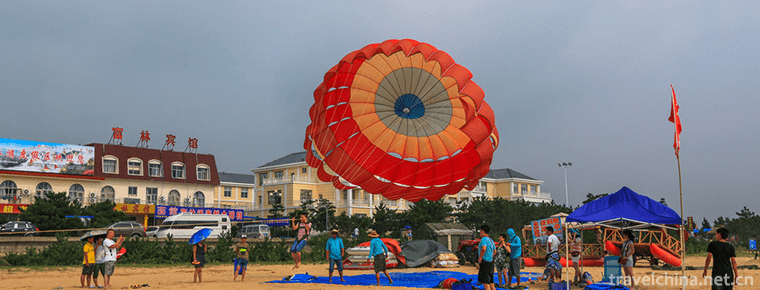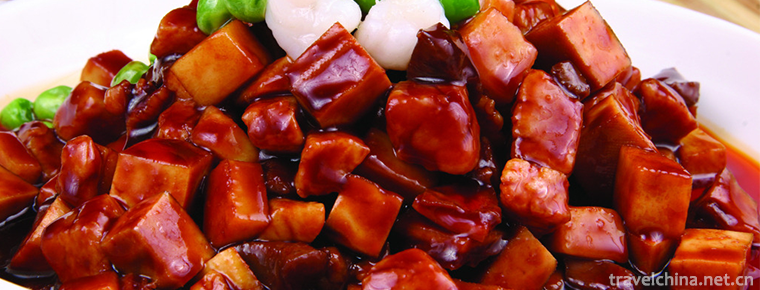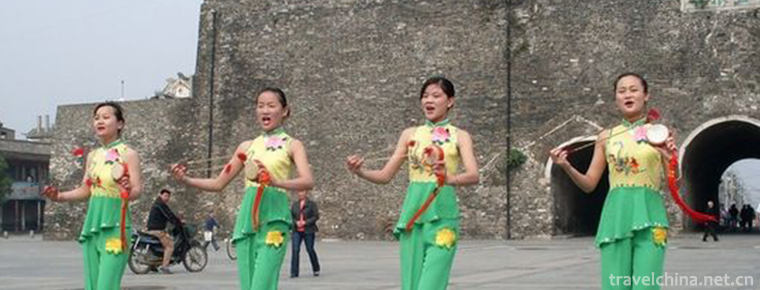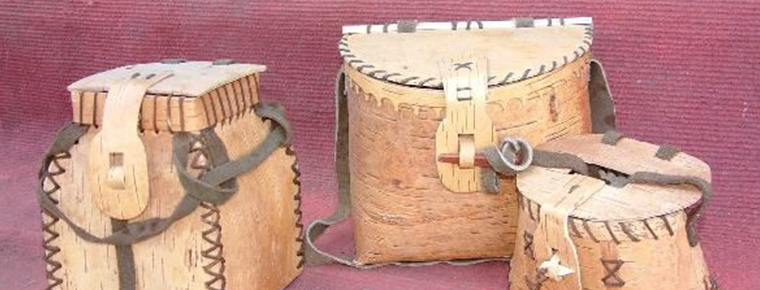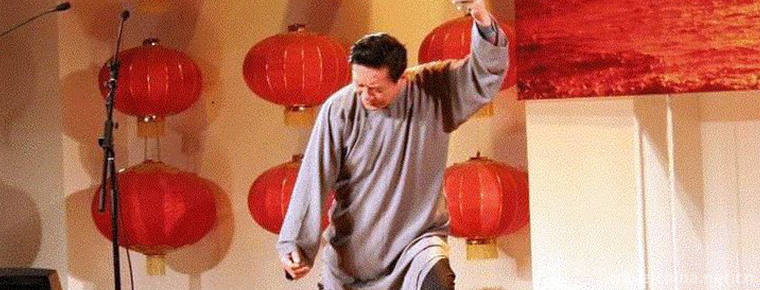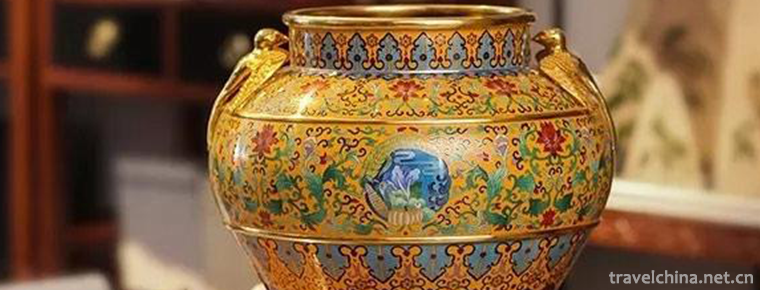Qin an Xiaoqu
Qin an Xiaoqu
Qin'an Xiaoqu, also known as the old tune of Qin'an, is one of the national intangible cultural heritages. It is an ancient traditional folk art variety formed and mainly popular in Qin'an and other counties of Tianshui City, Gansu Province. Formed in the mid-Ming Dynasty in the 16th century, Qin'an Xiaoqu has a long history and belongs to the singing form of Qupai. Qin'an Xiaoqu is sung in the local dialect of Qin'an, performing form or singing by playing three strings on one's own. There are more than 40 commonly used tunes, such as "Yueyi" and "Yuewei", with high and popular tunes, concise and rich melody, soft and elegant singing method. Traditional repertoires include Jade Wrist Topa, Xiaodengke, Baibao Box and so on.
historical origin
Qin'an Xiaoqu is an ancient opera art formed and mainly popular in Qin'an County, Tianshui City, southeastern Gansu Province. Qin'an, known as Xiliwa Township, is the ancient boundary of the Chengji Period. It is not only the birthplace of Fuxi and his sister Wa, but also the birthplace of Li Bai, a poet. The excavation of the famous "Dadiwan Site" in Sino-foreign proves that there is a civilized tradition of 4800-7800 years and its cultural heritage is very profound. Therefore, the local people and the surrounding people, in order to distinguish them from the foreign "Mei Hu" and other "Xiaoqu" (commonly known as "flower tune"), and this ancient form of folk art, commonly known as the "old tune of Qin'an".
Qin'an Xiaoqu belongs to the singing form of Qupai style, which is said to have been formed in 1499 (the twelfth year of Hongzhi in Ming Dynasty). It was initiated by Hu Qizong, the imperial ruler of Qin'an, when he was 19 years old, who first created "Four Six Overtones" and "Jade Wrist Topa". From 1796 to 1820 A.D. (Jiaqing Period of Qing Dynasty), Hanlin of Qin'an, Zhang Sicheng (see Qin'an County Chronicle) created Xiaodengke, Zhaojun He Fan and Chongtai. In the first half of the 19th century, during the reign of Daoguang and Xianfeng, folk songs were widely sung. In the period of the Republic of China, it was the most prosperous. And the "sitting and singing" as the main form of singing activities on the stage, but also derived from some "small opera" programs. Li Wenzan, Zhang Yaoting, Yan Tianzhi and other famous actors have emerged. Every New Year's Day or agricultural leisure season, people in the streets and lanes, courtyard Kangtou or field, to sing songs for entertainment.
Qin'an Xiaoqu was first formed in Xingguo Town, Qin'an County, and later developed to Guojia, Yebao and other townships. It was widely sung in Xingguo, Guojia, Yebao and other townships, and then spread to Wangyao, Anfu, Xichuan and other townships and surrounding counties and villages. In the 1950s, Qin'an Xiaoqu has developed and spread to more than 280 villages in 6 townships, with more than 40 kinds of commonly used singing tunes known. In 1957, when Qin'an Wax Dance participated in the second national folk performances, the tune was borrowed from Qin'an Minor Tunes.
(Guo Jiazhen Qin'an Xiaoqu Team for Wax Dance Accompaniment Atlas )
Artistic Characteristics
Qin'an Xiaoqu, also known as the old tune of Qin'an, mainly spreads in some towns of Qin'an, Qingshui, Gangu and other counties. and
In most parts of Northwest China, traditional drama and folk art differ from each other in that Qin'an Xiaoqu gets rid of such dramatic minors as Qin Opera, Tao Qing Opera and Quzi Opera as ruggedness, elegance, agitation and drum, rap and singing, and more expresses a delicate, sweet, lingering and low lingering charm similar to Jiangnan Xiaoqu. Its ups and downs of melody, long and broad rhyme, delicate and mellow singing, elegant and tactful modes of tune and appropriate large and small, also solemn and harmonious plot and singing style are unique.
Qin'an Xiaoqu is sung in the local dialect of Qin'an, either in the form of playing three strings for one person, or in pairs of three strings and wrestlers (copper ringing bells), or in turns of three strings, wrestlers and four tiles for two or more people. The singing style belongs to the combination of music cards, which can be divided into major and minor tunes. The commonly used music cards are "cross-tone", "cross-tail", "cross-word cross-tone", "four or six cross-tones", "Shiliting", "Manjiang Hong" and more than 40 others. The melody is elegant and popular, the melody is concise and rich, and the singing method is soft and elegant. In addition to the traditional repertoire of Yubi Topa, which was made by Hu Qizong, the pioneer of Qin'an, who adopted the "Four Six Vietnamese Tunes", there are also Xiaodengke, Zhaojun He Fan, Zhongtai Giving Chai, Boya Fuqin, Wang Xiangwobing, Zhuangyuan Pagoda and Baibao Box, which were widely sung since the Republic of China by Zhang Sicheng, a native of Qin'an in Jiaqing period of the Qing Dynasty. 。
The traditional accompaniment instruments of Qin'an Xiaoqu can be divided into two categories: plucking and striking: plucking, that is, the middle three strings, which are played by "double plucking" or "single plucking". Fighting type, there are wrestling (bell, copper), four tiles (bamboo).
(Atlas of performance scenes of Qin'an Xiaoqu )
(Traditional accompaniment instruments of Qin'an Xiaoqu )
Inheritance value
1. Historical and cultural values. Qin'an County has a long history. It has bred the world-renowned Dadiwan culture. It is one of the important birthplaces of ancient Chinese civilization. Folk art heritage and cultural accumulation are very rich and distinctive. It is in this environment that Qin'an Xiaoqu emerges, spreads and develops. Its inheritance is of great significance for carrying forward Qin'an's historical tradition and promoting regional cultural heritage.
2. Entertainment appreciation value. As a popular folk art, Qin'an Xiaoqu has been widely spread in the county, especially in the six townships of Xingguo, Xichuan, Guojia and Yebao in history. It is popular in the fields or in the streets, alleys and farmyards. It is a unique way for local people to entertain after work and exchange their feelings with relatives and friends. Become a common practice.
3. Understanding the value of research. Qin'an Xiaoqu is an important carrier and means for Qin'an people to express their love and hatred and express their feelings. Its unique singing form and content contain Qin'an people's aesthetic taste, spiritual belief and value orientation, and express the local people's special pursuit of food, clothing, housing and other aspects. It has unique value as research material of anthropology, folklore and aesthetics.
Inheritance and Protection
After liberation in 1949, Qin'an Xiaoqu, as a cultural heritage, has been effectively rescued, protected and excavated. Many Qin'an artists tried to innovate their tunes. In 1979, they successfully transplanted Liang Shanbo and Zhu Yingtai, which brought Qin'an tunes to the stage of Lanzhou and Tianshui operas. Since then, the successive transplants of Lou Tai Hui and Shuangshu Ji have further enhanced the artistic taste of Qin'an tunes. In November 2003, modern operas such as Yingying Copy Red, Village Official Romantic Music, Birthday and Love Students, directed by Cao Rui and others, toured in Lanzhou, Tianshui and Qin'an, and won many honors in Gansu Province.
In the 1960s and 1970s, because of the influence of specific historical background, Qin'an Xiaoqu was once put into the "cold palace" and was on the verge of being lost. After the reform and opening-up in the 1980s, Qin'an Xiaoqu was revived and endowed with new contents of the times by new literary and artistic workers, but the successors were not connected with each other and the times were severely interrupted, which led to the danger of losing it again. Traditional Qin'an Xiaoqu has no professional artists and performance team. It is usually temporarily assembled by enthusiasts. It is active at street junctions and fields in the form of self-entertainment "ground stalls" in the leisure time. Especially because of the impact of foreign culture and the change of modern life style, especially the sharp decrease of old artists and the rural young and middle-aged migrant workers, Qin'an Xiaoqu has been "neglected". The traditional oral and heart-to-heart teaching method is not conducive to its popularization and promotion.
In 2003, more than 40 kinds of Qin'an Xiaoqu were scattered among the people, and experts and scholars were invited to cooperate with the inheritors of Qin'an Xiaoqu. Through excavation and collation, the Qin'an Xiaoqu Collection was published by the people's government of Qin'an County with a fund of 100,000 yuan. On the one hand, the county government guides and encourages young and middle-aged people to learn to sing Qin'an ditty and carry out healthy inheritance. On the other hand, it gives subsidies to the few inheritors who have the ability to inherit, carries out regular physical examinations to ensure their health, and carries out professional title evaluation on representative inheritors. Taking Qin'an County Cultural Museum as the protection unit, the Qin'an Xiaoqu singing troop, with representative inheritors as the main body and young and middle-aged Qin'an Xiaoqu fans as the group, is organized to perform and discuss the Qin'an Xiaoqu regularly or irregularly. For the performance team purchased the corresponding clothing, musical instruments and other equipment, providing the necessary conditions for singing. Qin'an County Cultural Museum has set up a special research institute, Qin'an Xiaoqu Art Research Office, to further promote the in-depth research work.
In 2006 and 2008, Qin'an Xiaoqu was designated as a provincial and national intangible cultural heritage protection project. Qin'an Xiaoqu has one inheritor of national intangible cultural heritage and two inheritors of provincial intangible cultural heritage.
In 2011, Qin'an County was named "the hometown of Chinese folk culture and art" (Qin'an Xiaoqu) by the Ministry of Culture.
From 2011 to 2012, Qin'an County conducted a comprehensive investigation, groping and integration of Qin'an Xiaoqu distribution areas and singers. It established 17 Qin'an Xiaoqu singing teams based on six townships, namely Xingguo, Xichuan, Wangyao, Yebao, Anfu and Guojia. It appointed 17 comrades of Anzhi Equality as the head of the singing team. In 2012, it established Xiaoqu Association and voluntarily joined Xiaoqu Association. There are more than 450 employees.
(Atlas of inheritance and protection activities of Qin'an Xiaoqu )

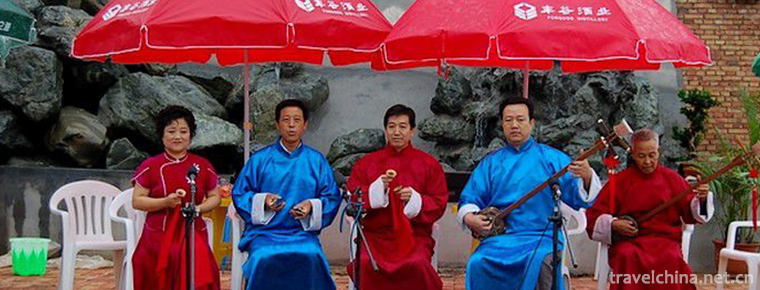
-
Yabuli Ski Resort
Yabuli Skiing Resort is a national AAAA-level scenic spot, located 20 kilometers southeast of Yabuli Town, Shangzhi City, Harbin City, Heilongjiang Province, 240 kilometers away from Harbin City.
Views: 183 Time 2018-12-22 -
Rizhao Seashore National Forest Park
Rizhao Seashore National Forest Park is located in the north head of Rizhao North Coastal Road, Shandong Province. In 1992, it was approved by the former Ministry .
Views: 193 Time 2019-02-07 -
Yalu River Scenic Spot
Yalu River Scenic Spot is located in Dandong City in the middle and lower reaches of Yalu River. It is 210 kilometers long from Hunjiang Estuary in the East and from Dadong Port in the west.
Views: 203 Time 2019-02-27 -
Eight Delicacies in Hot Sauce
Babao chili sauce is a famous traditional dish in Shanghai, with bright color and spicy fragrance. It is improved from fried chili sauce. "Babao chili sauce" tastes hot, fresh and slightly s.
Views: 201 Time 2019-03-25 -
Fengyang folk songs
Fengyang folk song is a traditional folk song in Anhui Province. Fengyang folk song in Fengyang flower drum is one of the important components of Fengyang folk song.
Views: 206 Time 2019-04-29 -
Craft of birch bark making
Birch bark making techniques, Oroqen Autonomous Banner of Inner Mongolia Autonomous Region, local traditional handicraft of Heilongjiang Province, one of the national intangible cultural heritage..
Views: 174 Time 2019-05-04 -
Liang Pings Gong and drum
Liangping Gong and drum is a kind of traditional folk instrumental music spread in Liangping District of Chongqing. In Liangping, the predecessors said that "Shu people Chao shan, gongs and drums.
Views: 292 Time 2019-05-13 -
Shandong Express Book
Shandong Quick Book, originating from Shandong Province's local traditional folk art form, has a history of more than 100 years. It was first popular in Shandong, North China and Northeast China, and .
Views: 168 Time 2019-06-13 -
Mosaic inlaid porcelain
Chinese mosaic art has a long history and unique style. In the Yin and Shang Dynasties, the decorative patterns of gold inlaid with jade appeared in bronze casting. With the continuous improvement of .
Views: 151 Time 2019-07-06 -
Batang Tuanjie steamed stuffed bun
The Tuanjie steamed bun was not invented by the 18th army when it entered Batang. In the old days, Tuanjie steamed bun, to be exact, was made by Batang ancestors hundreds of years ago. Moreover, it has been handed down to the present day..
Views: 234 Time 2020-12-06 -
Modern cheongsam
At the beginning of the 20th century, it was popular to wear a short jacket with trumpet shaped wide sleeves inside, and a long waistcoat without sleeves with the front and back of the coat reaching the ground. Since then, cheongsam has made some changes in the edge, sleeve.
Views: 116 Time 2020-12-11 -
Overview of Guangyuan
In 2019, the GDP of Guangyuan will reach 94.185 billion yuan, an increase of 7.5% over the previous year, which is the same as that of the whole province. Among them, the added value of the primary industry was 15.301 billion yuan, an increase.
Views: 349 Time 2020-12-15

